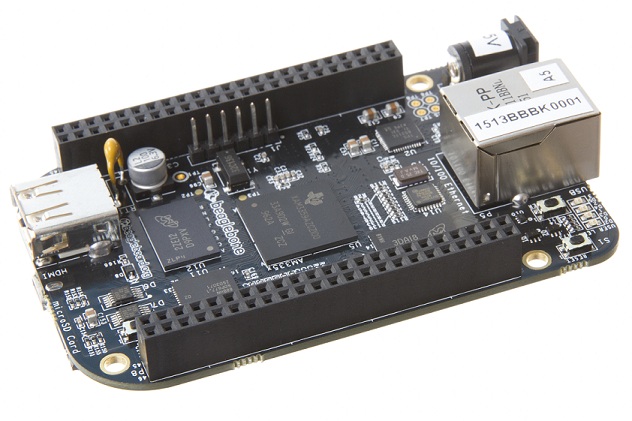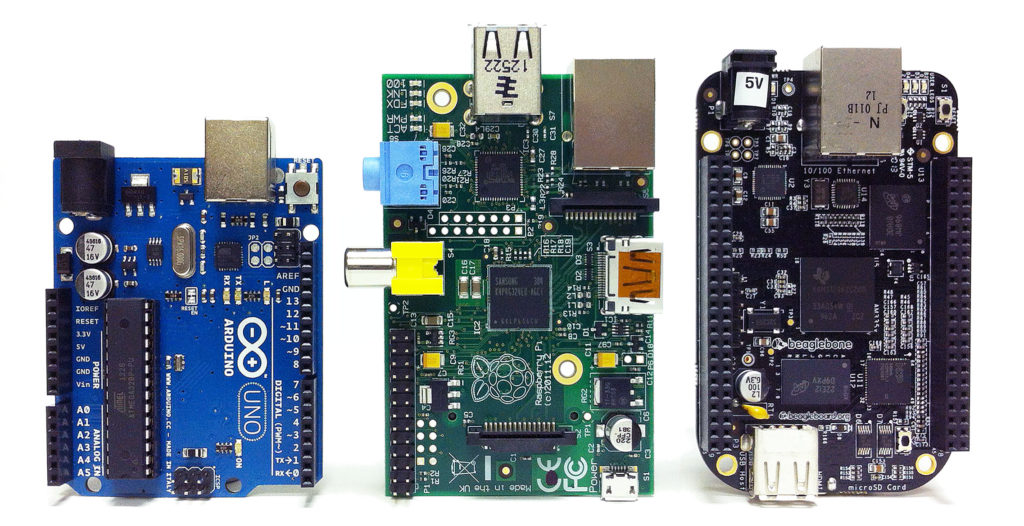Recently, we started work on a museum exhibit project that requires reading six sensors, controlling eight relays, and displaying text and graphics to a display monitor. Normally, we like using Arduino, but because of the display requirements of this project, we decided to venture into a small Linux-based single board computer (SBC). We studied the Raspberry Pi and the BeagleBone Black (BBB), both of which looked like excellent candidates. In the end, we decided on the BBB because it has 65 General Purpose Input/Output pins (GPIO), 4 Serial UARTs, 8 PWM pins, and so on. The BBB appears better suited out-of-the-box for robotics and sensing/controlling the physical world, which is what we normally do, so we thought that was the one to learn about. Arduino microcontrollers are normally programmed with a form of C, but with its full-blown Linux operating system, the BBB supports many different languages, including C, C++, BoneScript, Javascript, Python, and many others. After studying the pros and cons of each, we decided to pursue Python as our main language for BBB programming. In the weeks ahead, we’ll start providing the details of our first BeagleBone Black project.
THE BEAGLEBONE BLACK
THE ARDUINO UNO, RASPBERRY PI, & BEAGLEBONE BLACK



Finally an update from the family, after a long hiatus. More frequent updates in the future please! I don’t want to lodge a formal complaint. 😉
Todd: Ah, so there is someone out there listening! 🙂
We’ll try to ramp up the posts. Thanks for the encouragement. 🙂
Great choice in the BBB. I think you will appreciate the BBB community and support.
I thoroughly enjoy watching your skills and abilities evolve over time and am jealous of your workshop. I have been showing my grandkids your work to inspire them. Thanks for the blog.
Here’s more encouragement from the outside. More updates! Keep up the good work! 🙂
If you don’t begin to update your fans on a regular basis, I am going to write to the White House. They know you. I am sure they’ll have ways to get you to issue more frequent updates. But I really don’t want to be nasty about the whole thing.
Also, there’s a new thing called… Twitter! Then you can have followers. Hey, what a concept!
I have been trying my best w/ a Raspberry, but the software pwm seems a bit flaky for controlling motors. Just got my bbb…looking forward to more updates!